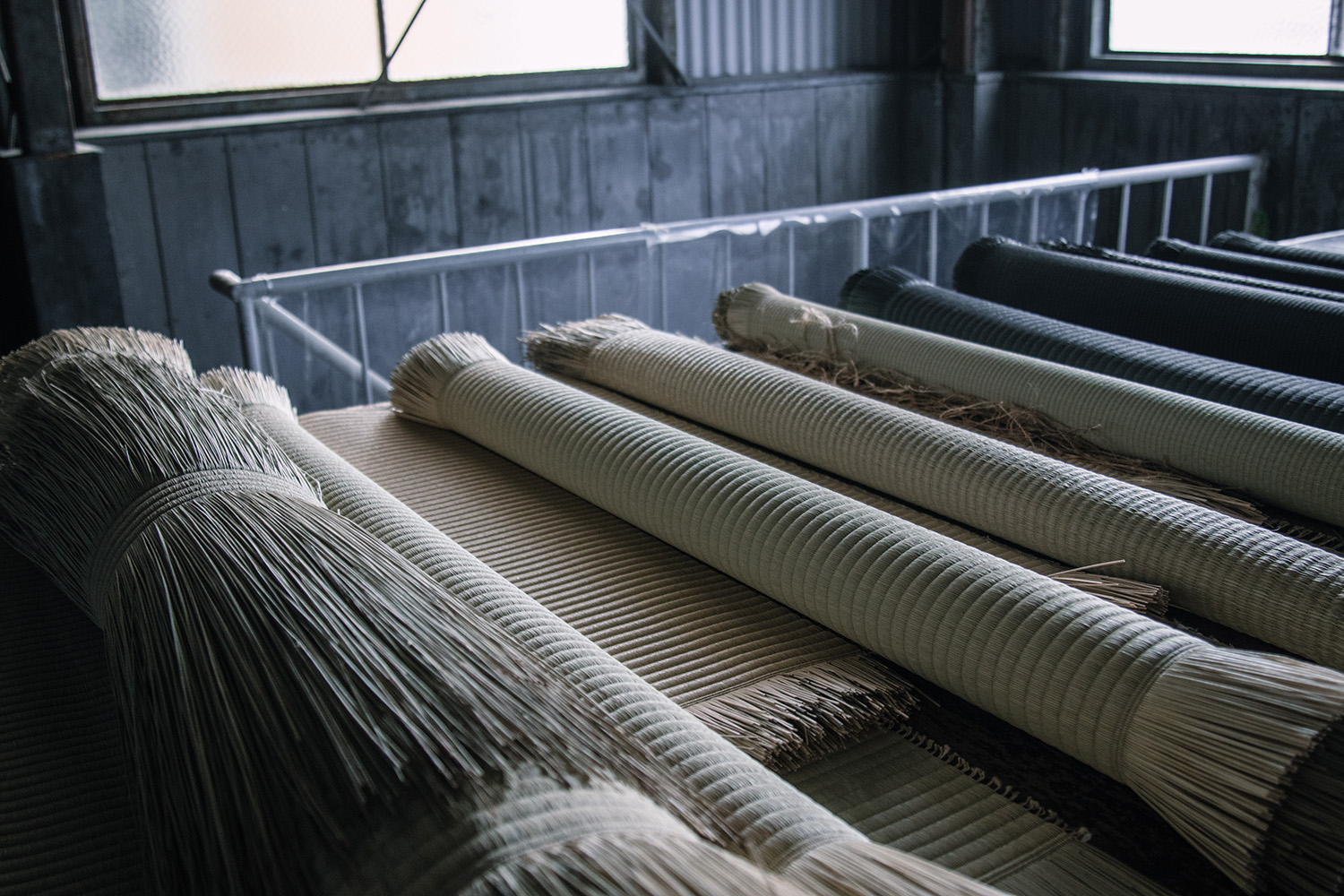Questions
-
What is tatami?
Tatami is a type of mat used as a flooring material, originally for traditional Japanese spaces now it has applications in all cultures. Traditionally made using rice straw to form the core, the cores of contemporary tatami are often composed of compressed wood chip board or polystyrene foam, or a mix. With a covering of woven soft rush (藺草 igusa) straw. Tatami can come in traditional sizes with a fabric boarder (Kyoto 191 x 95.5cm or Tokyo 176 x 88cm) or in modern no edge (no fabric border). Mitsuru manufactures all shapes and sizes depending on the clients needs.
What is the base/core?
There are three main types of tatami base, these are natural, board as well as foam and board base. The selection depends on the project. The natural base key features are superior control of humidity, fireproof, thermal insulation, & durability. The thickness of the tatami depends on the project, it is really up to the design. Tatami is traditionally between 45-55mm. It can be as low as 15mm, or even made as a simple cover without a base, this is called uwashiki.
What is the cover?
— OMOTE / COVERThe cover is traditionally made from a reed called Juncus effusus, washi paper, or a plastic washiest blend. Price variation depends on the quality of the omote, is calculated taking into account the growing area and how many individual reeds per mat, and the way it is weaved. Dyeing is chemically done, but Mitsuru is experimenting with other more natural dying techniques. Washi is very strong, more stain resistant than natural, and scent free. There is a water-repellent option of traditional omote that maintain the smell.
What ARE on the edges of the tatami?
— HERI (fabric edges)The fabric edge of the tatami is called heri, this finishes the mats traditionally. Tatami can be made without heri. Mitsuru can source and present non-traditional alternative edges to match your project. Please enquire.
Can I have TATAMI without fabric edges?
— NO EDGEOf course!
-
Where is your tatami made?
All in Kyoto, Japan. Yokoyama tatami is in repurposed traditional dying factory. Mitsuru carefully selects materials only from the best suppliers and framers in Japan. Making authentic Japanese tatami.
-
I have seen cheaper tatami. Why is yours better?
- Cheaper products are generally made in China where unlike Japan there are no regulations determining the strict enforceable growing criteria, there is no certification and tatami mats are mass produced without certified craftsmen. This material doesn’t maintain its color or strength.
- Mitsuru only uses materials with a certification from the Ministry of Agriculture and Forestry Japan. This protects the environment, the farmers, and craftsmen like Mitsuru.
- Supporting traditional Artisans and supporting local people.
- Mitsuru is an award winning craftsman in traditional handmade tatami and even his machine made tatami are all finished in part by hand, making them superior on the market. This also ensures they fit your space and have the life span you’d expect.
-
I don’t have a Japanese room can I have tatami?
Is there an option for western style rooms?
How do you install it in a western home?
— FRAMETatami doesn’t have to be laid in a traditional configuration, Yokoyama tatami can import custom frames with the tatami, or the client/designer can specify the dimensions so tatami can be made to fit. We also work with authentic Japanese carpentry which can be adapted to suit your project.
-
Can I ship tatami internationally?
— INTERNATIONAL SHIPPINGShipping varies on destination and weight. Sea freight is the cheapest option. For more detailed info refer to the shipping info in the price page. Following this please contact us for a quote.
-
I want something different!
— Color optionsWe offer a huge variety of color options now natural igusa dyed – this retains the smell of natural tatami! Colors include blue, pink, purple, grey, yellow, red, etc. There is also the standard washi color options offered. Please let us know what you are thinking and we can develop something that fits your project.
-
I/my children’s have allergies?
Is tatami safe?
— INDOOR ENVIRONMENTAL QUALITY (IEQ)Several points that make tatami an excellent choice for those concerned about their environmental indoor quality.
- Tatami is hypoallergenic.
- Natural tatami acts as an air purifier. It absorbs carbon monoxide & acts as a temperature regulator, absorbing moisture and releasing it for the dryer months.
- For a families tatami offers a great option for babies and small children with its air-purifying qualities, hypoallergenic materials, slight cushion effect for little ones.
- The mats also act as insulation both for temperature and sound
I am worried that because tatami is natural it will invite pests and mold. Will it?
— PESTS/MOLDTatami normally doesn’t suffer from pests but the event it does a simple insecticide will remove the problem. The natural base has the greatest chance but if cared for correctly this is rare.
-
How can I clean tatami?
— CLEANINGGenerally spills on tatami are easy to remove. You use a soft damp towel wiping with the grain never against it. If a spill of red wine is taken care of immediately it shouldn’t stain. DO NOT use chemicals on the tatami, if necessary very diluted dish soap. Although water is recommended to not affect to the color. Vacuum is 100% OK.
There are options for each situation. We have a natural omote that has a waterproof coating. It can withstand spills/contact with water for 30min before it penetrates the omote. Prefect for children, the elderly, restaurants, spaces adjoining bathrooms, etc. Please enquire.


